
EOS 5D Mark II, EF17-40mm f/4L USM lens, f/14, 0.6sec, 17mm, ISO200 by Jopetsy
From a calm, sparkling turquoise that stretches out into the horizon to tumultuous navy fringed by pure white froth, the seas present its majesty in many forms. There is an art to capturing such raw, unpredictable energy and if you find your lens drawn towards the seas, learn more about shooting seascape here.

EOS 6D, EF24-105mm f/4L IS USM lens, f/18, 11sec, 24mm, ISO100 by Andrew Thackway
Technically a subgenre of landscape photography, the art of shooting the seas isn’t as easy as one might imagine. As with landscape photography, because you are photographing outdoors, you have to accept the world as you see it, for you have no control over the elements. The one thing you can control though, is the appearance of the waves, whether you prefer them to appear glasslike and smooth or surging with motion and power.
Learn the tips of landscape photography in this article: Mastering the Art of Landscape Photography
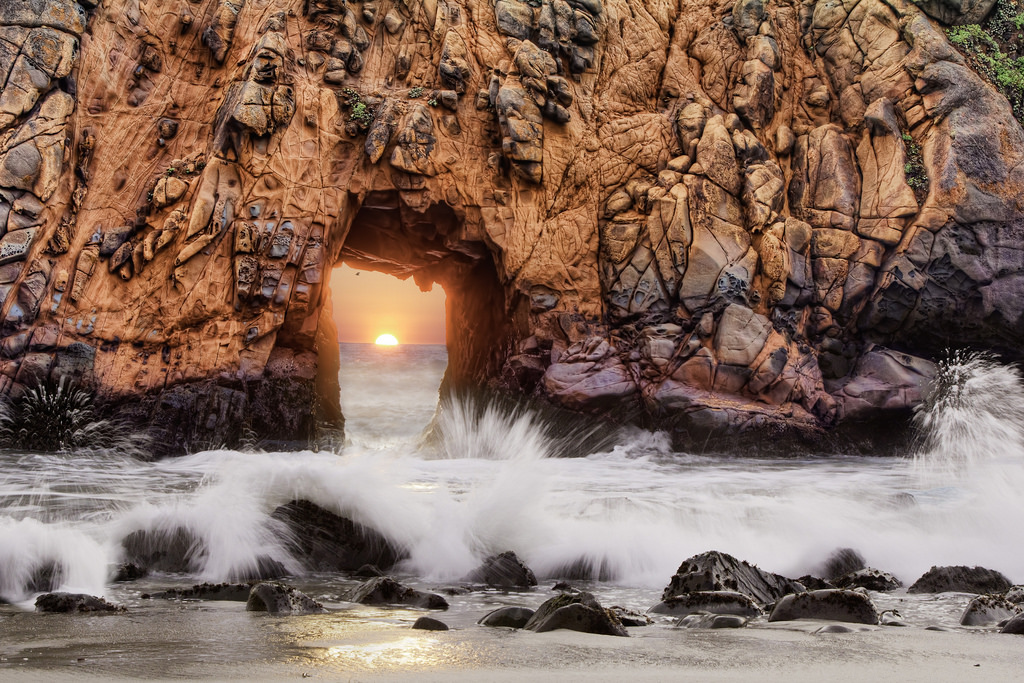
EOS 60D, EF24-105mm f/4L IS USM lens, f/11, 1/8sec, 47mm, ISO800 by Jonathan Dinh
Seascape can be a challenging subject matter, but the coast provides a unique mix of elements and weather conditions that don’t present themselves elsewhere, making it well worth the effort. With a little patience and practice, you’ll be capturing some truly stunning shots.
Essential Equipment
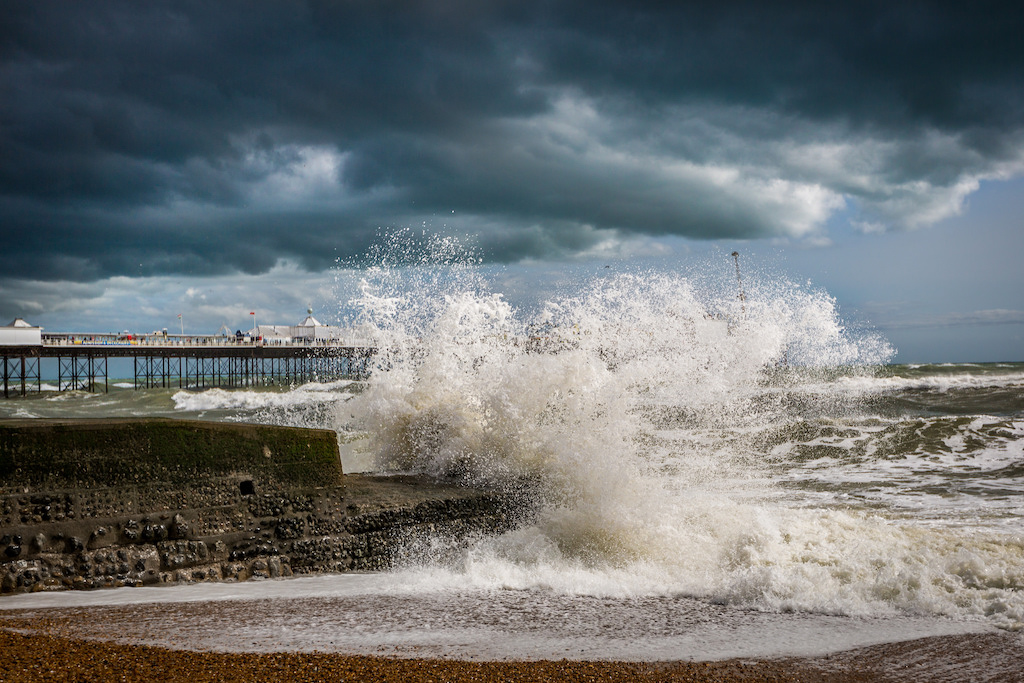
EOS 5D Mark III, EF16-35mm f/2.8L II USM lens, f/2.8, 1/8000, 35mm, ISO100 by Davide D’Amico
Wide angle lens and lens hood: while the choice of your lens is determined by the effect you are out to achieve; most seascape photographers opt for wide angle lenses in order to capture as much of the scene as possible. A wider angle lens also helps convey a sense of grandeur – so think a focal length wider than 35mm, although you can still get great shots with other focal lengths. A lens hood is optional if you have UV filters, but it can help eliminate flare, increase contrast and offer some protection against sea spray.
Example of wide angle lenses:
Canon EF11-24mm f/4L USM
Canon EF16-35mm f/2.8L III USM

EOS 5D Mark III, EF17-40mm f/4L USM lens, f/11, 0.6sec, 17mm, ISO100 by Gemma Stiles
Tripod and remote control: chances are, you’ll be taking plenty of long exposure shots, which is where a tripod will really come in handy. Consider investing a little more if you’re purchasing one, as your tripod will be constantly exposed to the elements. A remote control will further help to reduce shake, although you can always use the self-timer on your camera.
Spare batteries: constantly shooting long exposure will drain out your battery, and you don’t want to be in a situation where your camera dies just as you’re about to capture some magnificent waves!
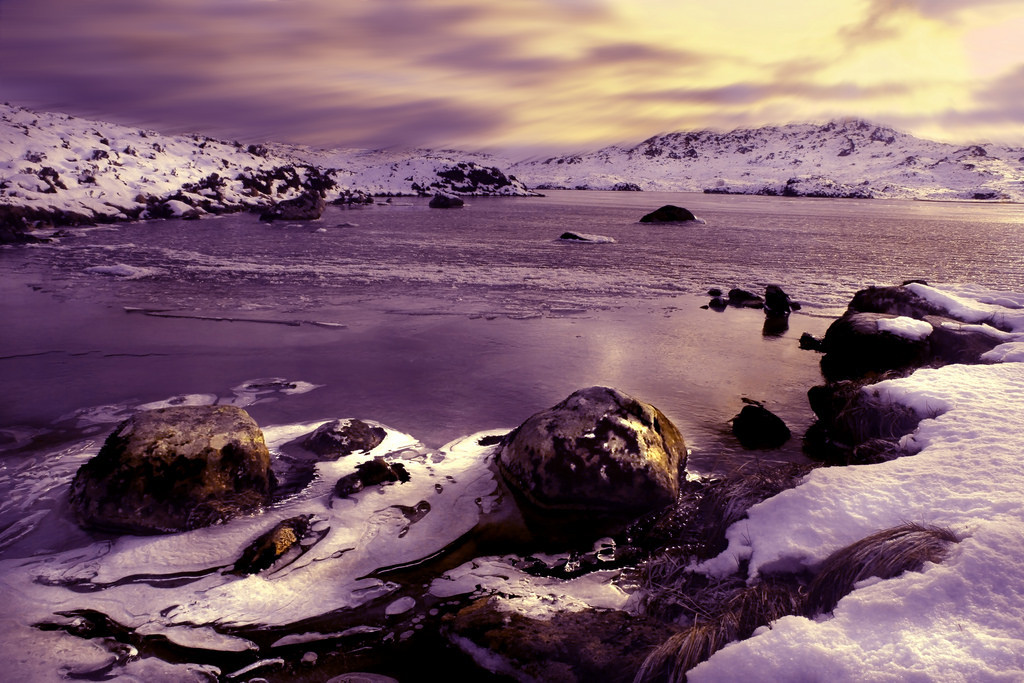
EOS 7D, EF-S15-85mm f/3.5-5.6 IS USM lens, f/16, 1/60sec, 15mm, ISO100 by Graeme Law
Filters: There are 3 types of filters to consider for seascape photography. Polarizing filters help you reduce glare and reflections, produce more saturated colours and turn the sky a darker blue. It reduces about 2 stops to your exposure, which helps if you want a blurred effect on the water. A Neutral Density Filter reduces the amount of light passing through and allows you to shoot at slower shutter speeds, coming in a varying strengths from 1 stop to 10. These filters have no effect on colour, tone or saturation. Finally, the Graduated Neutral Density Filter helps even out exposure between the foreground and background, a tricky problem for when you’re shooting a scene with the sky.
Lens cleaning solution and cloth: shooting near the beach means your equipment will frequently get coated with salt crystals. Always clean your gear after your shoot is over, and be gentle as dry salt crystals can easily scratch your lens.
Things To Consider
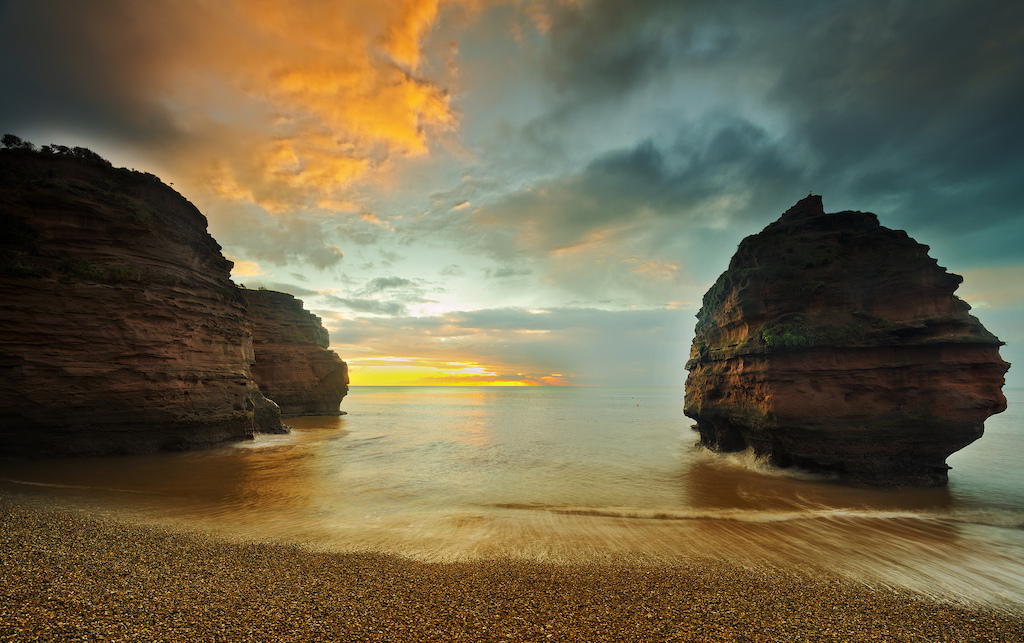
EOS 5DS R, EF16-35mm f/4L IS USM lens, f/8, 2sec, 16mm, ISO50 by The Narratographer
Time of day: Patience is key when it comes to shooting seascape, as you never know what mother nature might come up with! One of the most important factors with seascape photography is lighting, so consider the time of day you are shooting.
Read more about how chaning lighting conditions affect your landscape photography: Capturing Breathtaking Landscapes Under Ever-Changing Lighting Conditions
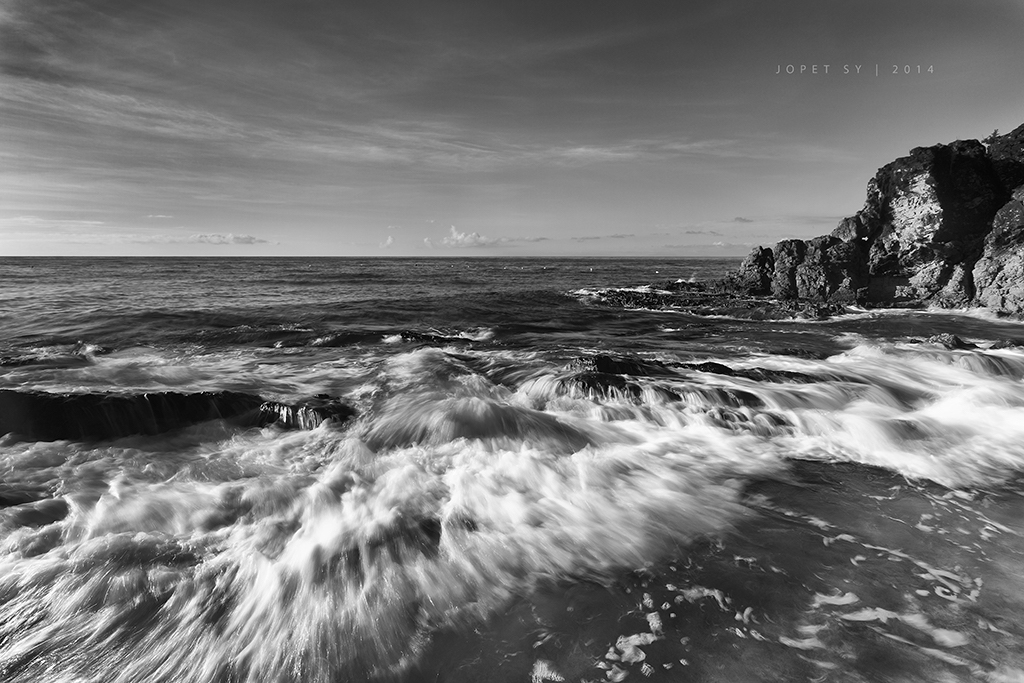
EOS 5D Mark II, EF17-40mm f/4L USM lens, f/14, 1/4sec, 17mm, ISO50 by Jopetsy
Shutter speed: As with any photo involving water, shutter speed is crucial to the final outcome of your image. A faster shutter speed freezes the action and is ideal for shots of curling waves or breaking tides, where a slower shutter speed helps blur the water and gives your image a “foggy” effect. There is no hard and fast rule as to which shutter speed you should be using, so play around and experiment.
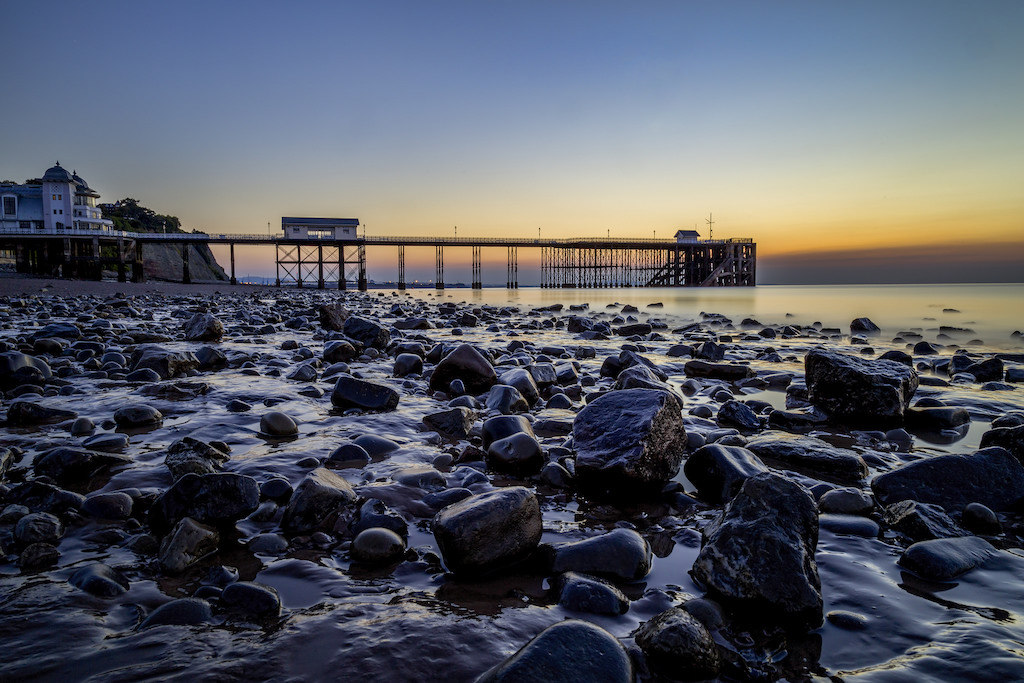
EOS 6D, EF24-105mm f/4L IS USM lens, f/20, 135sec, 24mm, ISO100 by Andrew Thackway
Depth of field and composition: Don’t just shoot the sea as is – look around for interesting elements you can incorporate into your image to give your final shot more dimension. Look for rocks, roots protruding from the sand or even a jetty in the distance to provide some lines. As with most photography, do not ignore the rule of thirds.
Work With The Elements
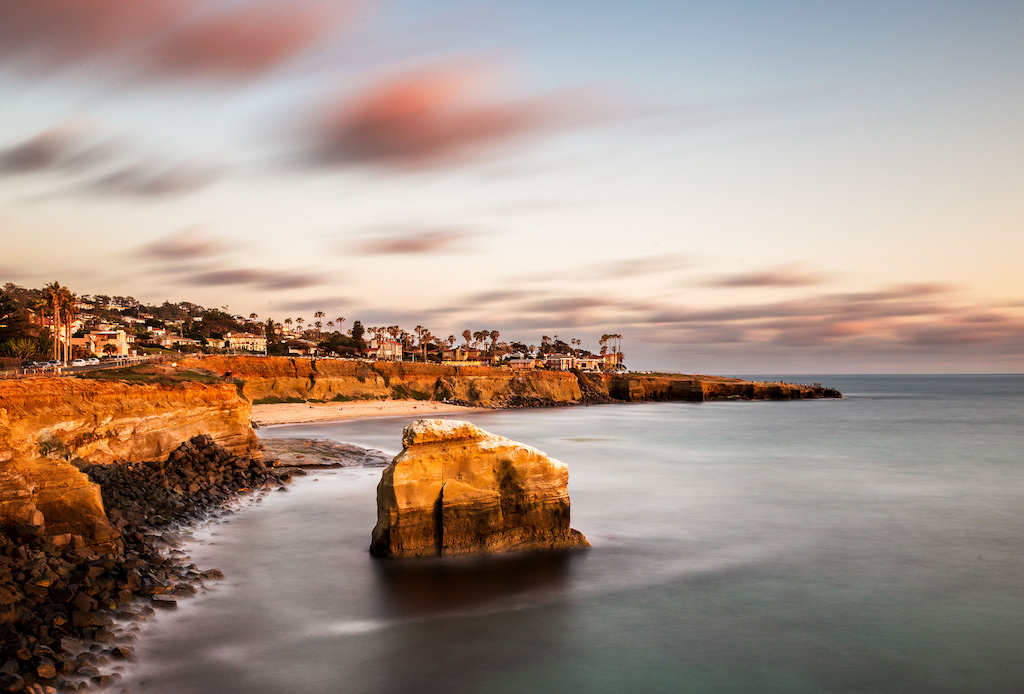
EOS 6D, EF24-105mm f/4L IS USM lens, f/16, 120sec, 28mm, ISO100 by Brian Roberts
Cliffs: Frame your shot with a cliff. If there are cliffs nearby, they can provide great vantage points where you’ll be able to take amazing shots perched atop them. Shooting down onto the beach while making sure to incorporate big rock formations can be visually powerful.
Sand: play around with wet sand as it provides interesting reflections, and looks particularly nice when treated in monochrome.
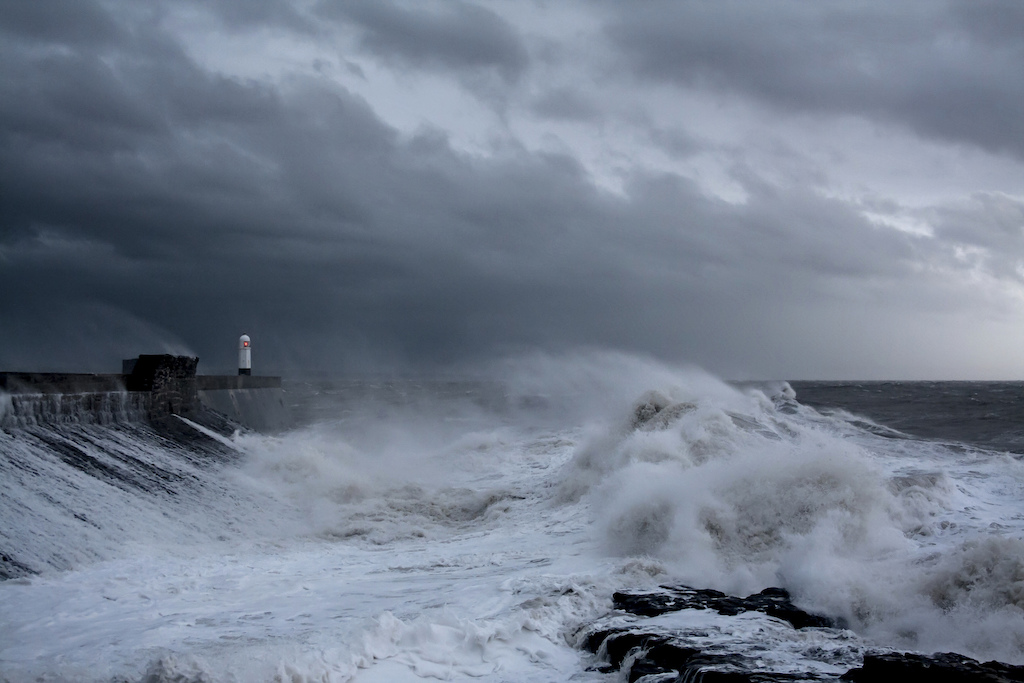
EOS 400D, EF-S18-55mm f/3.5-5.6 lens, f/6.3, 1/160sec, 31mm, ISO800 by Jeremy Segrott
Weather: Although you are unable to control the weather, you can use it to your advantage. Stormy days will allow for incredibly dramatic shots – think rumbling storm clouds and breaking waves, while a calm day will result in a picture-perfect postcard type shot.
Consider the tides – Low tide gives you the opportunity to capture more of the shore, with the possibility of little creatures and other objects like driftwood or seaweed to give your shot more dimension where shooting during high tide gives you the opportunity to capture shots like waves crashing over rocks
Safety First
As fun as seascape photography can be, do bear in mind that is can also be dangerous. It’s likely you’ll find yourself hiking over slippery surfaces and in the proximity of rising tides, with the chance your equipment could be swept away by freak waves. Be careful, and go forth and shoot.
Receive the latest updates on photography news, tips and tricks by signing up with us!
Profile of author

Mona Teo
Mona Teo is a writer based in Singapore who believes that there is nothing more powerful than the written word (not counting coffee). An avid scuba diver and traveler, she relies on her Kindle to get her through flights and seeks inspiration from the world around her.

































